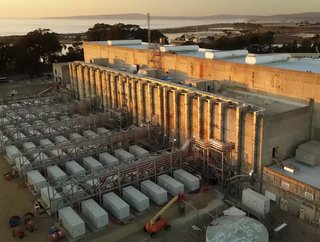Vistra unveils 'world's largest' battery storage site

Vistra recently completed construction on Phase II of its Moss Landing Energy Storage Facility, claiming the 100-megawatt expansion - which now brings the facility's total capacity to 400 megawatts/1,600 megawatt-hours - is the largest of its kind in the world.
Vistra is a leading Fortune 275 integrated retail electricity and power generation company based in Irving, Texas, providing essential resources for customers, commerce, and communities.
"This facility provides a solution California desperately needs and this expansion was able to come online at the right time – as the summer heat intensifies and demand for electricity is at its highest. It is possible because of the partnership between Vistra and the State of California, Pacific Gas and Electric Company, LG Energy Solution, and Burns & McDonnell," said Curt Morgan, chief executive officer at Vistra.
"The state's laudable immense buildout of intermittent renewable power has both lowered emissions and presented a reliability challenge. California produces an excess amount of renewable power during the day while the sun is up, but often struggles to meet demand as the sun goes down. Our Moss Landing battery system helps to fill that reliability gap, storing the excess daytime power so it doesn't go to waste and then releasing it to the grid when it's needed most."
With construction starting in September 2020, the Phase II expansion project was completed in July, ahead of schedule despite the many challenges presented by the COVID-19 pandemic.
Utilising technology from LG Energy Solution, Vistra's enormous lithium-ion battery system is co-located on the site of its existing Moss Landing Power Plant in Monterey County, a site that's been providing electricity to Californians since 1950. Burns & McDonnell provided engineering, procurement, and construction (EPC) expertise for the expansion.
"What's great about this particular site is that it has the space to support even further expansion – up to 1,500 MW/6,000 MWh – while responsibly utilizing our existing site infrastructure, including existing transmission lines and grid interconnection," added Morgan. "California leads the country in the transition away from fossil fuels and the Moss Landing Energy Storage Facility stands as a model for how batteries can support intermittent renewables to help create a reliable grid of the future."
The 100-MW/400-MWh Phase II expansion is operating under a 10-year resource adequacy agreement with Pacific Gas and Electric Company (PG&E). The 300-MW/1,200-MWh Phase I project has a similar 20-year resource adequacy agreement with PG&E.
Vistra is a market-leader in battery energy storage and in 2020 announced it would spend approximately $5 billion by 2030 in renewable and battery energy storage, including nearly $1 billion of development projects already underway, rotating its generation fleet towards zero-emission technologies. Moss Landing is the flagship project of the company's carbon-free Vistra Zero portfolio of generation assets.
Support for Vistra Moss Landing Energy Storage Facility
Congressman Jimmy Panetta said as California and the Central Coast derive more energy from renewable resources, storage is key for ensuring that power is available when the sun isn't shining, and the wind isn't blowing. "The energy storage facility that Vistra is deploying in Moss Landing will help us build a more reliable, low-emission grid, providing zero-emission power to communities far and wide when they need it. As we face the increasing threat of wildfires and disruptions to our grid, this backup power can serve to bolster our grid's stability and reliability."
State Senator John Laird added that California has committed itself to a renewable energy future and the Central Coast is the perfect example of how to transition former fossil fuel plants to renewable energy centers. "Developing battery storage in conjunction with wind and solar energy will ensure reliable, clean energy for decades to come."
Ray Kowalik, chairman and CEO, Burns & McDonnell, said designing and building the expansion of the world's largest battery energy storage facility – particularly during a global pandemic – was very fulfilling. "Renewable resources cannot be fully deployed unless we have a massive investment in energy storage like the Moss Landing facility. We are honored to partner with Vistra on such an iconic project that will help provide reliable power to the residents in the region."






